Parody is what Project A-ko is all about. Even the title is a parody. Although the comedy stands on its own without prior knowledge required, almost everything is a joke or a nod to some anime trope. For example, A-ko, B-ko and C-ko are the way unnamed female extras are credited in some Japanese films. Not only is appearing as extras literally how these characters made their animated debut, it also hints to their nature as pastiches of other characters. Eiko is also a real Japanese girl’s name, with Biko and Shiiko presumably less common.
I almost didn’t do one of these, because so many other people already have. But if the website is called projecta-ko.com, I think it’s expected, so I’m going to try to make it the best and most exhaustive one available. My sources include but are not limited to the official artbook, IMDB, ANN, the Secret File video, the Yuuji Moriyama DVD commentary, and my own discoveries and recollections. All the little nuggets will be integrated and ordered sequentially, starting with:
PREPRODUCTION
The title “Project A-ko” is a reference to the Jackie Chan movie “Project A”. Other than fights being a big part of the narrative, the two movies don’t have much in common. “Project A-ko” was reportedly a placeholder title that made it onto the final product. Early trailers referred to the title as “The most talked-about code name”.
Project A-ko was originally intended to be the third installment of the Cream Lemon adult OVA series. It was decided by the producer that the story had the potential for mainstream appeal and would be more profitable as a theatrical release.
What we know about the prototype Project A-ko‘s story concerns a battle between rival schools. A-ko Nanga (or Nanka, or Minimiga; there are several ways to read the kanji) and her girlfriend C-ko Kitano attend UG (Yuuji…) Academy. B-ko Touwa is a genius gang leader from another school who wants to conquer all of the schools in Japan. She becomes enamored with C-ko, or else had a previous relationship with her, and decides to steal her away. A-ko fights back but at this time she doesn’t have superpowers, she fights using her agility and is portrayed with various weapons. B-ko still would have used her robots and custom-built power suit to fight A-ko as well as Miss Ayumi, who also wears a power suit as part of UG’s private army. At one point Ayumi was going to be A-ko’s older sister. Alternately, Miss Ayumi is suggested to be an alien with little antennae popping out of her hair when she is angry, which resemble the stray wisps of Creamy Mami’s hair. However, the alien princess subplot is either not present at this stage of development, or it was being kept secret. Space vehicles appear in the production materials but are stated to be part of the Union Starfleet of Japan Defense Force. A male version of Mari/young Kenshiro, presumably still B-ko’s flunky and the Headmaster of UG who resembles the figure from Edvard Munch’s The Scream round out the cast. The climax of the film would have featured UG Academy transforming into a Macross-like robot. (thanks to fuyusaki for translation assistance!)
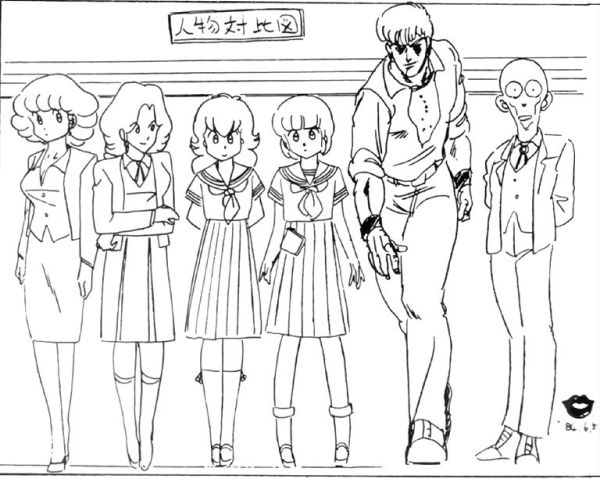
The movie was approved to go into production based on the strength of some visual materials and storyboards, no script was presented. In fact, Project A-ko never had a script at all, it was made completely from storyboards and details were constantly being added while in production.
Many of the Project A-ko staff worked on Urusei Yatsura previously, and inserted various character cameos that predated the film’s release by years. All three characters appear in a prototypical form in episode 124 as subordinates of Mendou’s sister, A-ko and B-ko appear on TV in episode 128, and in another episode “Project A-ko” is advertised in a newspaper.
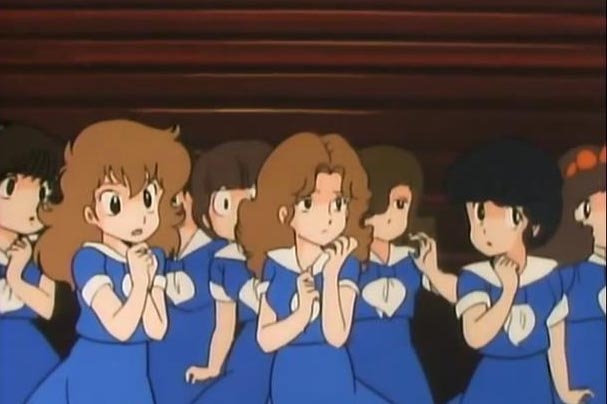

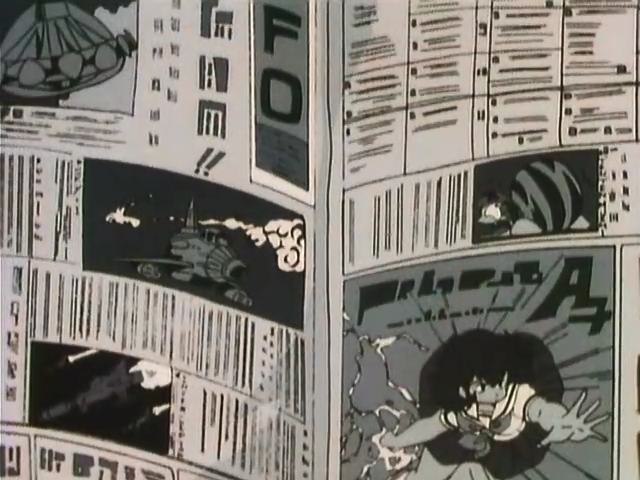
The movie was released theatrically June 21, 1986. It was on a double bill with Ami’s Journey, about the recurring Cream Lemon heroine. Below is one of the full-page ads that appeared in anime magazines at the time, which also advertises the Secret File videotape for 6800 yen.

The Secret File was eventually included as an extra with English subtitles on U.S. Manga Corp’s second DVD release of Project A-ko. It was released to the Japanese market prior to the movie’s theatrical debut to build hype. The narrator is Ippei Ohgi, who hosted the morning radio show A-ko listens to in the Japanese version. The tape consists of interviews and behind-the-scenes footage documenting both the musical team and the animators at work. Katsuhiko Nishijima stated in his interview that the reason he was making the movie was to buy some new teeth.
PROJECT A-KO (1986)
Graviton City is inspired by the port city of Yokohama. Some of the visuals in the sequels really drive this home. Graviton is also the name of the design studio that mechanical designer Shoichi Masuo founded with Hideaki Anno in 1984. Anno contributed to the movie as well, but is uncredited.
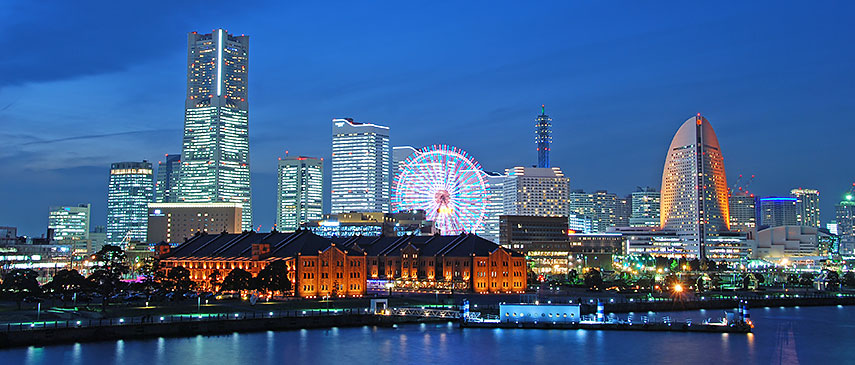
According to Moriyama, Graviton High School was inspired by a women’s college in Kichijoji. He didn’t say which one, but I made a search of colleges in the area and the one that it seems to be is Tokyo Women’s Christian University.
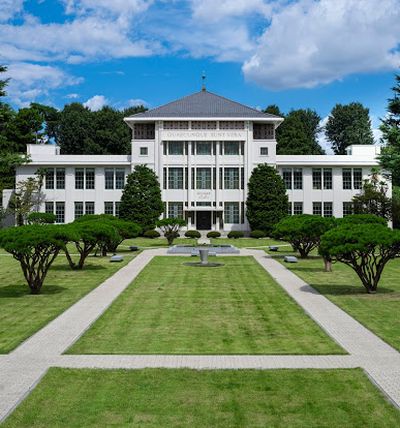

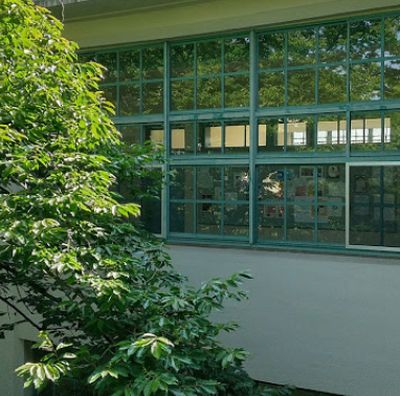
Miss Ayumi is based on the lead character from Magical Angel Creamy Mami. Although Mami has lavender hair, her alter-ego Yuu has green hair, the same color as Ayumi. It’s worth mentioning that the original C-ko from the Cream Lemon version was based on Yuu.
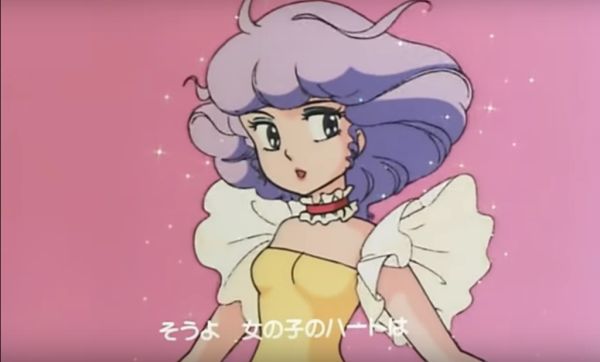

B-ko was Emi Shinohara’s first voice-acting role.
Palette-swaps of Urusei Yatsura characters Shinobu and Oyuki as well as Yuri of Dirty Pair are students in Ayumi’s class.
Mari is a parody of the Fist of the North Star character Kenshiro, to the point that she is practically just Kenshiro in drag. She uses many of his mannerisms and signature attacks including the head-exploding technique that Asa falls victim to, although it is not as gory (or fatal) as it is in Hokuto no Ken.
It was sound director Yasunori Honda’s idea to have Mari sound like a man when grunting or yelling, but a girl when speaking.
The scene of B-ko in the bath is said to be the only part of the earlier Cream Lemon production to be salvaged in the final film. Her feet look a little weird, just saying.
“In Your Eyes” was sung by Samantha Newark, who played Jem on the 80s cartoon of the same name. However, she did not perform any of the songs on that show.
The lunch C-ko presents A-ko while she repairs the desks with is more grotesque than the first, being made up of what appears to be real magazine cutouts of food. It changes from shot to shot and a bowl of soup, bottles of soda, beer, sushi, cakes and grapes are visible. Most egregiously, a copy of the Project A-ko Secret File VHS is stuck in there.
The movie A-ko and C-ko watch parodies a scene from Harmageddon, or Genma Taisen. Colonel Sanders takes the place of the psychic android Vega.
Colonel Sanders statues are a common sight at Japanese KFC restaurants. The clanking sounds the Colonel makes in his approach suggest that he is one of those statues come to life. There’s an entertaining article I’ve put in the links about the Curse of Colonel Sanders, which has afflicted the Hanshin Tigers after one of the statues was thrown into a river by fans in a post-win frenzy. This event occurred in 1985 and probably didn’t influence his appearance here, but it’s a fun supernatural connection.
Also watching the movie are Ten from Urusei Yatsura and many caricatures of the production staff.
Speaking of the staff, Nishijima provided the voice of B-ko’s unseen servant who delivers the surveillance disc. The background information displayed on screen is not translated into English in the CPM releases but it says “GRADUATE OF YURIKAGO KINDERGARTEN”.
The alien Captain, later known as Captain Napolipolita, is heavily influenced by Captain Harlock, the Leiji Matsumoto character. The alien craft also appears to resemble Harlock’s spaceship The Arcadia, but we later see that this is only the very front of the ship. Harlock often held a glass of wine during his space battles to show how composed he was, but the alien Captain is often holding one because she is an alcoholic. Her voice was provided by Shuichi Ikeda, known best as the voice of Gundam’s Char Aznable. The Captain also draws some influence from Char, particularly his appearance in Zeta Gundam. Ikeda was reportedly displeased when he discovered the character he was playing was female and had an outburst at the wrap party. Regardless of that, he returned to voice Napolipolita in the sequels as well.
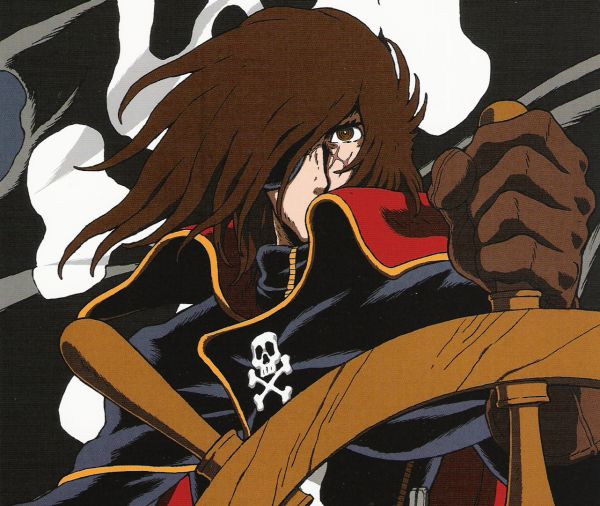


When she challenges A-ko for the first time, B-ko quickly pops into a baseball uniform and puts on some baseball playing poses. This was done at the insistence of Assistant Director Shigeru Morikawa, who was a huge baseball fan. This weird moment is made even weirder in the English dub, as B-ko says, “We’ll hold our own Super Bowl.”
B-ko’s minion Ume was voiced by Megumi Hayashibara. It wasn’t the part she was going for.
The Arashiyama Five were inspired by a robot called Golem, from the 1969 anime film The Flying Phantom Ship. The robot was designed and animated by the then-obscure Hayao Miyazaki. If you haven’t seen the movie, I highly recommend that you do. It’s on Youtube and is only an hour long with quite a lot of action and craziness (international soda conspiracy, ahem) packed into that time. I will say up front, Golem is only in it very briefly.
A-ko is mistakenly colored without her wristbands in one shot before she and B-ko have their final battle.
When the Earth Forces are battling the alien spaceship, one of their fighters shoots out a volley of missiles, two of which are Pepsi cans advertising “The Pepsi Challenge”. In 1984’s Macross: Do You Remember Love?, a similar split-second joke appeared with two missiles replaced by cans of Budweiser and Tako Hai (literally, “Octopus Highball”). Mecha designer Shoichi Masuo was involved with both scenes.
There’s a character in the classroom that B-ko throws A-ko into that resembles A-ko’s Urusei Yatsura appearance. The girl with the distinctive headband is also a character swipe from another anime. I’ve seen her in vintage anime magazines, but don’t know her name yet…
A-ko and B-ko calling out the names of their special attacks was inspired by the 70’s baseball manga, Astro Kyuudan, where the characters also did this with their moves. I always considered this kind of ubiquitous in Japanese media, it would be interesting to learn if Astro Kyuudan is the original source of this practice. It doesn’t seem to have ever had an anime but I found this ad for the PS2 game on Youtube, it looks pretty awesome.
One of the buildings a spider-tank smashes through has a poster that says “ORANGE” and has a picture of Madoka from Kimagure Orange Road.
There’s another bit later in The Flying Phantom Ship that struck a chord with me while watching, that had to have been some inspiration to the A-ko staff. Hopefully this isn’t a spoiler, seriously watch it.
Although she doesn’t display much regard for public property, A-ko doesn’t (directly) harm any humans during the invasion. The tanks that A-ko throws at B-ko are unmanned drone units and both of the pilots in the planes which were destroyed while she was riding on them parachute to safety.
Some of the Lepton soldiers share their fashion sense with Lufy, a popular character from Gall Force. Gall Force was in production at around the same time as Project A-ko, and there is a scene in Eternal Story where character bios that resemble A-ko, B-ko and C-ko appear onscreen. (Sorry about the quality, I need to upgrade those pics)
Why does the alien ship have a Parthenon? Moriyama said they just felt like that was the kind of place you’d keep a captured princess.
Some of the panties in the ship’s laundry room have English writing on them, including the mysterious word “BABI” which appears hidden throughout the movie.
Turns out that Joe Bob Briggs’ breast count was wrong on this one, he missed D’s top being blown away by an explosion on the bridge. This also got past the censors on the Sci-Fi channel.
Footage of the Challenger Space Shuttle explosion was used as reference material for the big explosions in the movie. Moriyama said he felt bad about it.
The most well-known in-joke in Project A-ko is that A-ko’s parents are meant to be Superman and Wonder Woman. A-ko’s dad is reading a “Daily Plenet” newspaper with headlines from two Fleischer Superman cartoons, and her mother is folding a blue superhero suit. The suit has a “C” on it instead of an “S” due to concerns that DC might sue.
C-ko imitates Arale from Dr. Slump when she runs with her arms out and says “Ki—-in!”
At the end of the movie, C-ko is keeping pace with A-ko as they run past Miss Ayumi on her scooter, and continues to do so as they approach the waiting B-ko. It seemed to be suggested that C-ko was manifesting some kind of power but that was never explored in the sequels.
PROJECT A-KO 2: PLOT OF THE DAITOKUJI FINANCIAL GROUP
More to come…





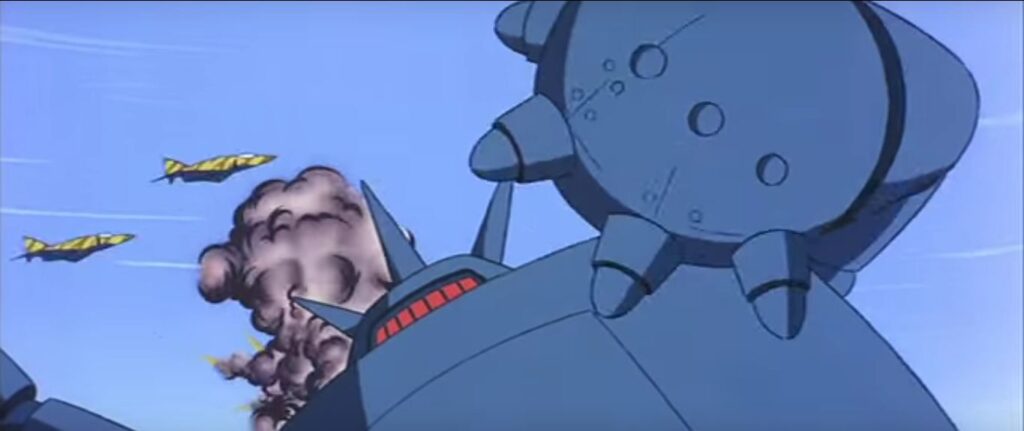
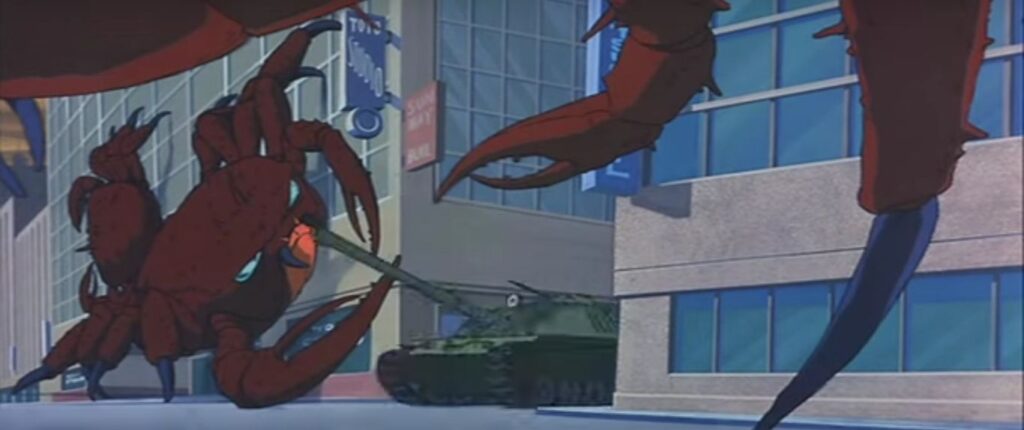
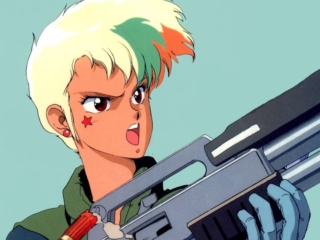
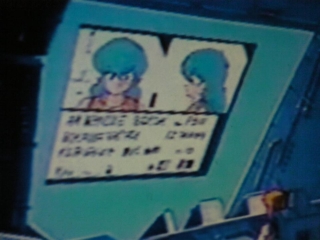
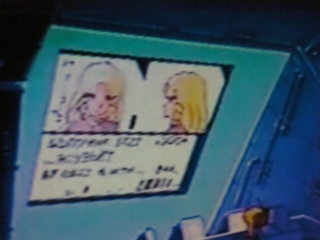
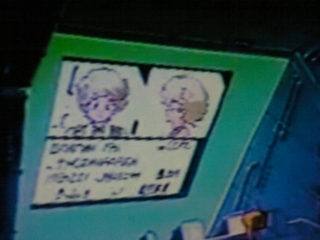
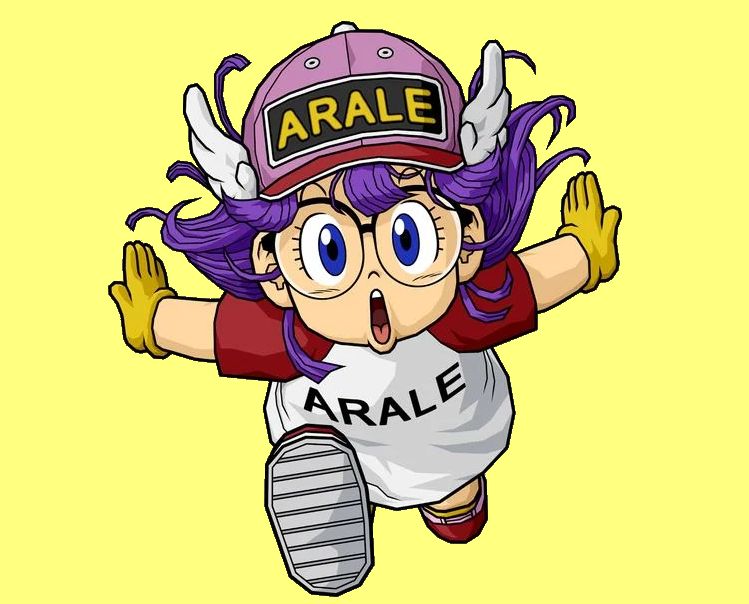
Recent Comments